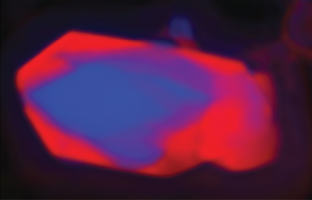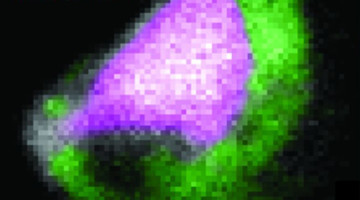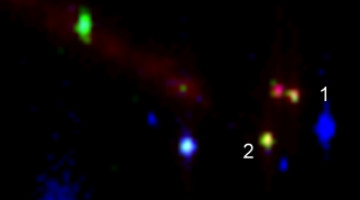Recently a team of Stanford and Berkeley Lab researchers used x-rays at the ALS in a novel way to observe the behavior of electrons during technologically important chemical reactions in metal oxide electrocatalysts. What they learned has upended long-held scientific understanding of how these catalysts work. Read more »![]()
![]()
Decoding Ancient Ocean Acidification Signals from Plankton Shells
Ancient plankton shells can record the physical and chemical state of the ocean in which they grew. Decoding these signals can reveal changes in global climate, atmospheric CO2, and the acidity of the oceans in deep geologic time.
New Technique Gives a Deeper Look into the Chemistry of Interfaces
A new technique developed at the ALS offers sub-nanometer depth resolution of every chemical element to be found at heterogeneous interfaces, such as those in batteries and fuel cells. The technique has relevance to energy research, heterogeneous catalysis, electrochemistry, and atmospheric and environmental science. Read more »![]()
![]()
Record-Setting Microscopy Illuminates Energy Storage Materials
Using soft x-ray ptychography, researchers at the ALS have demonstrated the highest-resolution x-ray microscopy ever achieved by imaging five-nanometer structures. The researchers used ptychographic imaging to map the chemical composition of lithium iron phosphate nanocrystals, yielding important new insights into a material of high interest for electrochemical energy storage. Read more »![]()
![]()
Space Dust Analysis Could Provide Clues to Solar System Origins
New studies of space dust captured by NASA’s Stardust Interstellar Dust Collector have shown that interstellar particles may be much more complex in structure and composition than previously thought. Read more »![]()
![]()
Chloride Depletion in Aged Sea Salt Particles
Elemental and chemical imaging analyses showed that sea salt particles react with water-soluble organic acids in the atmosphere through a unique mechanism which had been overlooked in atmospheric chemistry. The reactions release volatile hydrogen chloride into the atmosphere and leave behind sea salt particles drained of chloride.
Read more »
Platinum Nanoclusters Out-Perform Single Crystals
Researchers have found that under high pressure—comparable to the pressures at which many industrial technologies operate—platinum surfaces can change their structure dramatically in response to the presence of high-coverage reactants. Read more »![]()
![]()
Nanoscale Chemical Imaging of a Working Catalyst
Researchers identified the chemical species present for an iron-based Fischer–Tropsch synthesis catalyst and to image their distribution on the nanoscale. When developed further, this new tool may give chemists the ability to design and tailor catalysts for maximum selectivity and efficiency in a wide range of chemical processes. Read more »![]()
![]()
Particles from Comet 81P/Wild 2 Viewed by ALS Microscopes
NASA’s $200-million, seven-year-long Stardust mission returned to Earth thousands of tiny particles snagged from the coma of comet 81P/Wild 2. Four ALS beamlines and the researchers using them were among the hundreds of scientists and dozens of experimental techniques in facilities around the world that contributed to the preliminary examination of the first samples.
Read more »![]()
![]()
- « Previous Page
- 1
- …
- 3
- 4
- 5





